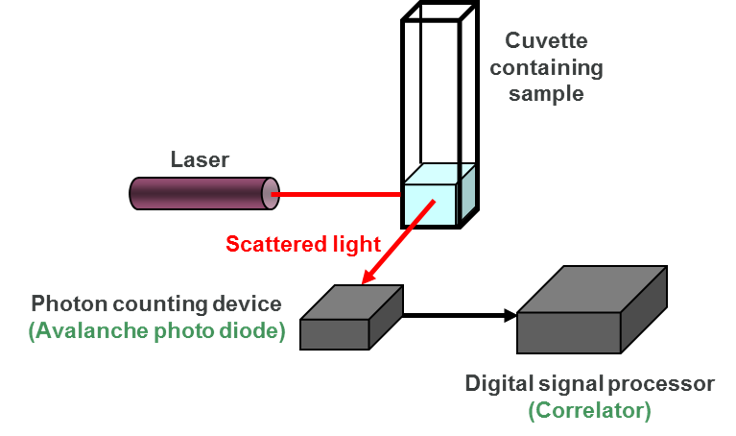

This approximation is particularly valid at short delay times τ and for similar particles. Furthermore, the abundance of single scattering events at measurement positions close to the cell wall results in an apparent increase in uniformity yielding a lower polydispersity index which is more representative of the physical system. The intercept of the correlation function may serve as an indicator of relative strength of single to multiple scattering.

We find that the contribution of multiple scattering events effectively reduces both the measured scattering intensity and the apparent size from the autocorrelation function. In this paper, we show how comparison of different polarization components can help ascertain the presence of unwanted multiple scattering, which can lead to false conclusions about a sample’s mean size and polydispersity. With the ease of use of today’s commercial DLS instrumentation comes an inherent danger of misinterpretation or misapplication at the borderlines of suitability. While there are limitations in size range, resolution, and concentration, the technique has found ubiquitous applications from molecules to particles. This protocol is useful for DLS method validation and quality control.Īnalysis of variance Continuous distribution Cumulant analysis Diffusion coefficient Dynamic light scattering Hydrodynamic radius Particle sizing.Ĭopyright © 2021 The Authors exclusive licensee Bio-protocol LLC.Dynamic light scattering (DLS) is well established for rapid size, polydispersity, and size distribution determination of colloidal samples. The method of cumulant analysis in the program SEDFIT (produced the most precise estimate, D 20, w 0 6.06 ± 0.07 F (1 F = 10 -7 cm 2 s -1), which was within the range of estimates obtained by diffusiometry or sedimentation velocity.

We compare D 20, w 0 estimates to literature values obtained by diffusiometry, sedimentation velocity analytical ultracentrifugation, and other DLS instruments.
#Stokes einstein equation dynamic light scattering software
We compare several analytical methods in existing software programs to estimate the diffusion coefficient of BSA (extrapolated to water at 20☌ at infinite dilution, D 20, w 0 ) and describe a statistical method to obtain 95% confidence limits of the precision of the estimates. We describe a procedure to perform DLS measurements on monomeric bovine serum albumin (BSA) purified by size-exclusion chromatography using the Zetasizer Nano S particle size analyzer. Dynamic light scattering (DLS) is the most common method to measure the diffusion coefficient of macromolecules. Additionally, measurement of the diffusion coefficient and the sedimentation coefficient, and application of the Svedberg equation, yields the molecular weight, which is particularly useful in the characterization of very large macromolecules. Measurement of the diffusion coefficient and application of the Stokes-Einstein equation produces the hydrodynamic radius, which is a commonly used gauge of particle size. Diffusion is a fundamental process in biological systems that governs the molecular collisions driving biochemical reactions and membrane and transport.


 0 kommentar(er)
0 kommentar(er)
